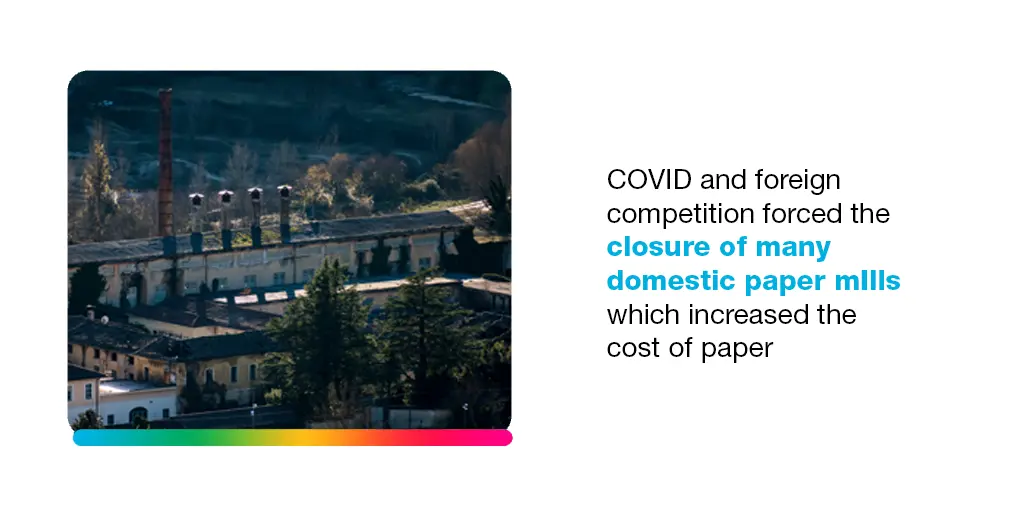
One of the biggest challenges commercial printers face today is the relative scarcity – and rising cost – of paper. At the outset of COVID, when the global economy stuttered to a halt, the demand for print in most categories took a nosedive. Now, in the post-pandemic world, with demand for print coming back, shortage of materials and labor are affecting the ability to produce it.
As in all markets, when demand outstrips supply, prices go up. To date, printers have been able to protect their earnings by passing rising material costs on to their customers. That said, paper pricing is not expected to come down any time soon and is likely to affect change in the overall print model. Let’s look at why:
Going back to the 2018-2019 timeframe, paper production plunged 14%. Prior to that year, a lot of low-cost, Asia-sourced paper flooded the market and depressed the value. Many domestic paper mills couldn’t compete on costs and ended up shutting their doors. Then COVID hit, depressing the market further (outside the food packaging and healthcare segments).

Because it costs hundreds of millions of dollars to reopen a paper mill, it’s not likely those shuttered mills will come back online. By the year 2030, we anticipate only two major mills will be left in the U.S., representing the majority of this country’s paper supply. Given all those factors, we expect paper costs to be a major driver in the transition to a digital print model, which enables higher value print, shorter runs and more sophisticated use of data.
It won’t be a paperless world by any means – but there will be less print that costs more in the future. So, while the print model of the past was focused on volumes and efficiencies of scale, it’s now more about finding a niche where you can make high-value products for which people are willing to pay a premium.
For example, direct mail continues to show unique value, especially as data security risks associated with social media and digital advertising continue to rise. If printers can help advertisers optimize the use of direct mail, and increase their ROI, those customers will be willing to pay more for each piece. The digital print model helps create that added value by enabling advanced personalization, as well as flexibility in substrate materials and weights – plus eye-catching enhancements and embellishments.
In addition to creating more valuable print, the future is also about making print very easy to order, fast and flexible up to the very last minute. As we move more and more toward a mobile world, self-service using online portals will become prevalent, helping to reduce complexity, and enabling easy updates.
In summary, the print model of tomorrow is all about driving new value and ease-of-use for customers through the advanced use of data, the ability to customize, and the automation available with digital print technology. Automation will also play an important role in the future of the industry’s labor force, as the relative size, age and cost of today’s employees continues to shift.
Next week, we’ll be taking a look at the labor outlook for the U.S. and how it’s affecting the print business model of the future.

The specialty colors and effects available through Fujifilm’s Fujifilm Revoria Press™ PC1120 technology are being creatively used in new applications, enabling growth for printers:
Learn more: Fujifilm Revoria Press™ PC1120